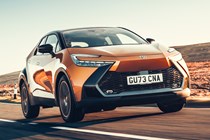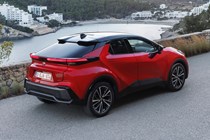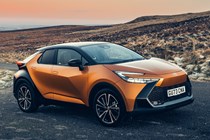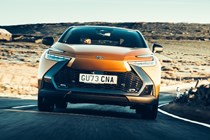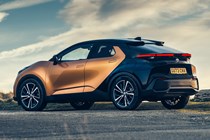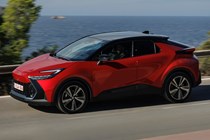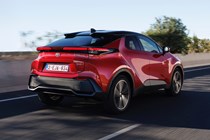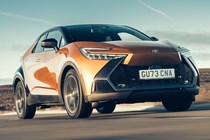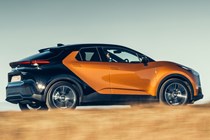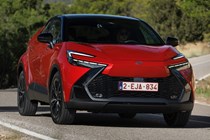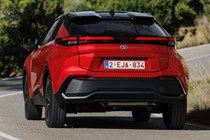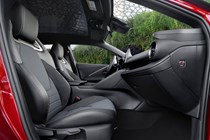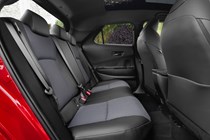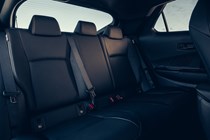Toyota C-HR boot space, practicality and safety
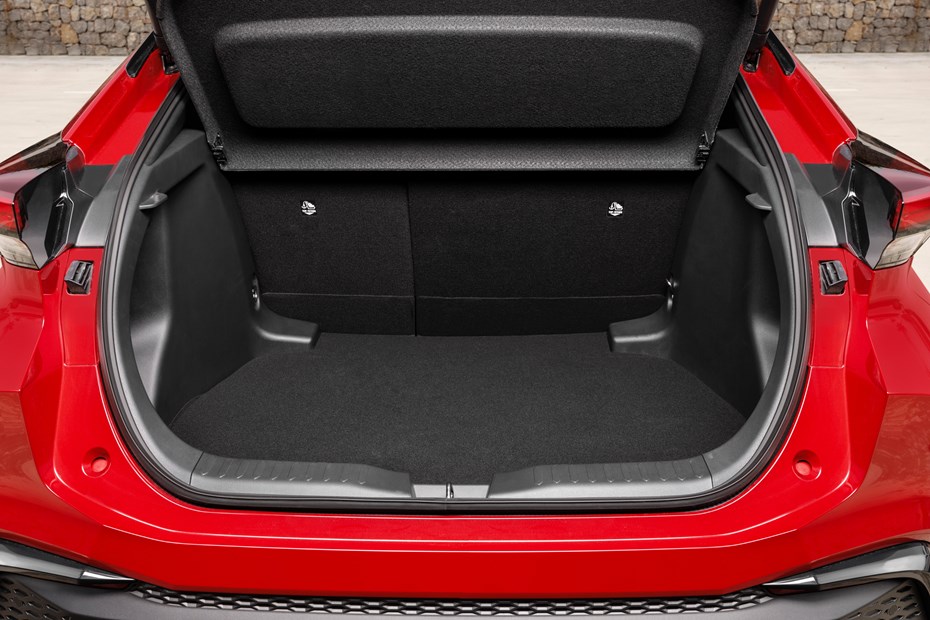
How much space is there?
Rear legroom isn’t particularly impressive for the class and neither is headroom. You’ll get four six-footers in, but those in the back won’t be particularly happy.
Toyota has packaged the plug-in hybrid well for people though, which means it has the same amount of passenger space as the standard car. The battery pack and chargers are mounted under the floor of the cabin, about where they’d be in an EV, meaning headroom and legroom are unchanged. Granted, it’s still not as spacious as Niro, but that’s beside the point.
Boot space and storage
The boot is also on the small side, maxing out at 388-litres in the 1.8 Hybrid. Choose the 2.0-litre and this drops to 364-litres, with the plug-in likely to have even less. There’s a little bit of a load lip and no two-level boot floor, while the rear screen’s angle limits room when you remove the parcel shelf.
That lack of space is emphasised in the plug-in hybrid. Toyota had to sacrifice some boot space to make everything fit into the C-HR’s body shell – and the sacrifice is quite a big one. The standard 1.8-litre’s 388 litres of boot space is reduced to 310.
What’s worse for Toyota is that Kia Niro PHEV has 348 litres of boot space. Then again, the Niro’s design focuses more on function rather than form, so you need to decide what you value more – ruthless practicality or snazzy looks.
Is it easy to park?
By virtue of the C-HR’s relatively compact city-friendly dimensions, as well as the rear park assist camera and front and rear parking sensors that come fitted as standard, it’s a relatively easy car to park.
Forward visibility is decent, though not so good over the shoulder as the rear are almost non-existent. The rear camera display is crisp and bright, and that’s good for getting you into parking bays or between cars on the street.
Safety
- Five-star Euro NCAP rating
- Great child occupant safety score
- Excellent driver-assistance tech
Euro NCAP crash-tested the latest C-HR in 2024 – and it scored an impressive five-star safety rating. The testers were particularly impressed with how well it protected its child occupants. Both the six-year-old and ten-year-old dummies emerged from their wreckages virtually unscathed.
The C-HR scored well on its safety equipment, too, which is unsurprising considering its standard equipment. This includes automatic emergency braking with pedestrian and cyclist detection, road sign assist and adaptive cruise control. Lane departure assist is also included, and it can also assist with the steering on the motorway and other clearly marked roads that aren’t too bendy.
Watch the Toyota C-HR’s Euro NCAP crash test video

Euro NCAP rating
Ratings for this model not available
Equipment and options
- 3x3 point rear seat belts
- ABS
- Air conditioning
- Alarm
- Audio remote
- Body coloured bumpers
- CD
- Central locking
- Driver`s airbag
- Electric mirrors
- Folding rear seats
- Front electric windows
- Heated mirrors
- Height adjustable drivers seat
- Isofix child seat anchor points
- PAS
- Passenger`s airbag
- Rear electric windows
- Remote locking
- Sat Nav
- Steering wheel reach adjustment
- Cloth seat trim
- Heated seats
- Side airbags
- Parking sensors
- Electric driver`s seat
- Heated seats
- Metallic Paint
- Parking sensors
- Side airbags
- Sports seats
- Partial leather seat trim
- Electric driver`s seat
- Heated seats
- Metallic Paint
- Side airbags
- Sports seats
- Parking sensors
- Cloth seat trim
- Front fog lights
- Parking sensors
- Side airbags
- n/a
- Electric driver`s seat
- Heated seats
- Parking sensors
- Partial leather seat trim
- Sports seats
- Metallic Paint
- Side airbags
- Electric driver`s seat
- Heated seats
- Leather seat trim
- Metallic Paint
- Parking sensors
- Side airbags
- Sports seats
- Partial leather seat trim
Dimensions
| Length | 4362mm |
|---|---|
| Width | 1832mm |
| Height | 1564mm |


